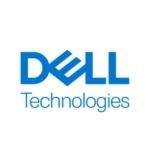What is our primary use case?
In a Hyper-V environment running Windows Server, we needed high availability in a virtualized environment for our file-share cluster without having to use expensive, external iSCSI storage. Using the built-in VDHX disks, StarWind provides the high availability that we need at a low cost and is relatively easy to manage. We now have a 2-node, fault-tolerant file-share cluster that behaves exactly as we want and it utilizes StarWind to provide the high availability directly on the VMs themselves, rather than connecting an external storage.
How has it helped my organization?
With StarWind Virtual SAN we have a cost-effective, reliable, and easy-to-manage solution without having to spend a lot of money on external SAN or NAS solutions that would have cost a lot more, and would have required more infrastructure to manage. Instead, for a little sum and a setup that took less than a day, the virtual SAN runs directly on the VMs and is easy enough to manage that a single technician can do it.
Most of the time, you don't even need to check on it as it just works once you have it set up. This saves money and time and you can cut down on your infrastructure needs.
What is most valuable?
Simply put, the best features of StarWind Virtual SAN are its core offerings:
- The fault-tolerant, high availability features using virtualized software. You can turn your local disk storage into high-availability iSCSI storage! It's so good, I can't believe Microsoft doesn't include this natively. Thankfully StarWind does the job.
- Ease of use; once set up, it just works and you don't have to spend a lot of time managing it.
- It's very cost-effective. There's even a free version license to use with a two- or three-node cluster. You don't have to purchase or manage a costly, external storage infrastructure that would essentially provide a similar service.
What needs improvement?
There is a general lack of documentation, especially up-to-date documentation to get started. This is especially true if you want to trial the software first using the free version, as some of the documentation that exists is sometimes old and certain steps provided might not be very easy to understand.
The free license only allows you to manage the setup via the CLI (the GUI works, but only provides information), which makes good documentation all the more important.
The GUI itself as well could use an overhaul; the user experience is a bit lacking until you get the feel for it.
For how long have I used the solution?
I implemented StarWind Virtual SAN in our environment in early 2023.
What do I think about the stability of the solution?
Once we had it set up, it just works. I can't remember the last time I had to check on the software to see that all was in order. StarWind seems very stable and reliable.
What do I think about the scalability of the solution?
We only use a two-node cluster. I have not tested the software outside of this configuration, however, if you're building a much bigger cluster, you'd probably be better off investing in an external, dedicated storage solution such as a SAN.
How are customer service and support?
The one time I had to contact support, they were very good and I got the impression they understand storage and their product.
How would you rate customer service and support?
Which solution did I use previously and why did I switch?
We did not have any other solutions before this, this was a whole new use case.
How was the initial setup?
We first tried the free edition, and due to some documentation being a little outdated, there were some issues as all we had the CLI to use. Once we went through it again though, it was fairly easy to set up.
Even for someone who has never used the software before, within a single day it was up and running. If you pay for the license, using the GUI is a breeze, even if the GUI as well takes some time to get used to and understand where to find things.
What about the implementation team?
We (I) did it in-house, and once I got comfortable with it, it was easy to set up.
What was our ROI?
We save money and time on having this solution, as there's less infrastructure to manage, we have high availability where we need it, and it's much more cost-effective than any other option.
What's my experience with pricing, setup cost, and licensing?
Try the free version first, as it's perfectly capable to be used and provides the same functionality (without the GUI) as the paid version. You can then simply upgrade. It does take a little bit of time to get used to managing it with the CLI, but once it's set up, it's a breeze.
Which other solutions did I evaluate?
We did check for options, but as we are running Hyper-V natively, there were not a lot of options as we didn't have the budget to go for an expensive hardware solution, and Microsoft does not provide a solution to this problem in the same way that VMWare for example does.
What other advice do I have?
StarWind is the best, and most cost-effective option that we have found on the market.
Which deployment model are you using for this solution?
On-premises
Disclosure: My company does not have a business relationship with this vendor other than being a customer.


















